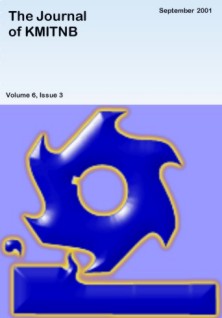ThaiScience
ThaiScience
THE JOURNAL OF KMUTNB
Volume 32, No. 02, Month APRIL, Year 2022, Pages 246 - 260
Modeling of the impact of the rock fill weir on river morphology of lam pha chi river
Rakbordin Yeelansuwan, Wisuwat Taesombat, Supapap Patsinghasanee
Abstract Download PDF
This research is an application of iRIC Nays2DH mathematical model for existing river morphology analysis and predicting future impacts together with finding appropriate and sustainable mitigation measures for the Lam Pachi River in Dan Makham Tia district, Kanchanaburi. The river cross section data of the Lam Pachi River were surveyed during December 2018 with 89 cross sections and a river length of 2.145 kilometers, with a distance between every 25 meters. The model calibration and verification were obtained by comparing between hourly water level data obtained from the measurements at the Early Flood and Soil Erosion Warning Station STN1006 of the Department of Water Resources and the water level obtained from the model during the period of December 1, 2018 until March 1, 2019. The results showed that the suitable Manning’n roughness coefficient was 0.0287 with the statistical indexes of r, NSE and RMSE equal to 0.729, 0.324 and 0.184 respectively. After that, the model would be applied to predict river morphology effects at natural flow rates and flow rates at recurrence periods of 5 and 10 years. It found that the erosion and collapse of the banks was mainly in the outer curve of the river and the opposite bank, causing sediment to accumulate into sandbanks, causing the river to become brandished and also changing the condition of the river"es position as well. In the case of existing condition with rock fill weir that has been affected by changes in the form of the flow pattern that flows through the downstream of the weir, causing the flow rate to increase, especially during the high flow rate range, flow rate increased in the range of 25–65% of the flow rate when compared with the absence of weir. Although rock fill weir will help slow down and retain water well during a small amount of water. Howerver, when there is a higher flow rate and overflowing weir, the height of the water will rise higher when compared to the absence of weir. Water will flow at a lower height because there is no weir to raise the water level. The difference in the height of the water causes the banks to collapse faster. Because weir makes more impact on the highest and lowest water level when compared to the case without weir. Therefore, the appropriate measures for this area are to improve or remove the existing weir. It will greatly reduce the rate of erosion and collapse of the bank.
Keywords
River Morphology; Hydrodynamic; Lam Pha Chi River; A Two-dimensional Morphodynamic ModelTHE JOURNAL OF KMUTNB
Published by : King Mongkut's University of Technology North Bangkok
Contributions welcome at : http://www.journal.kmutnb.ac.th
